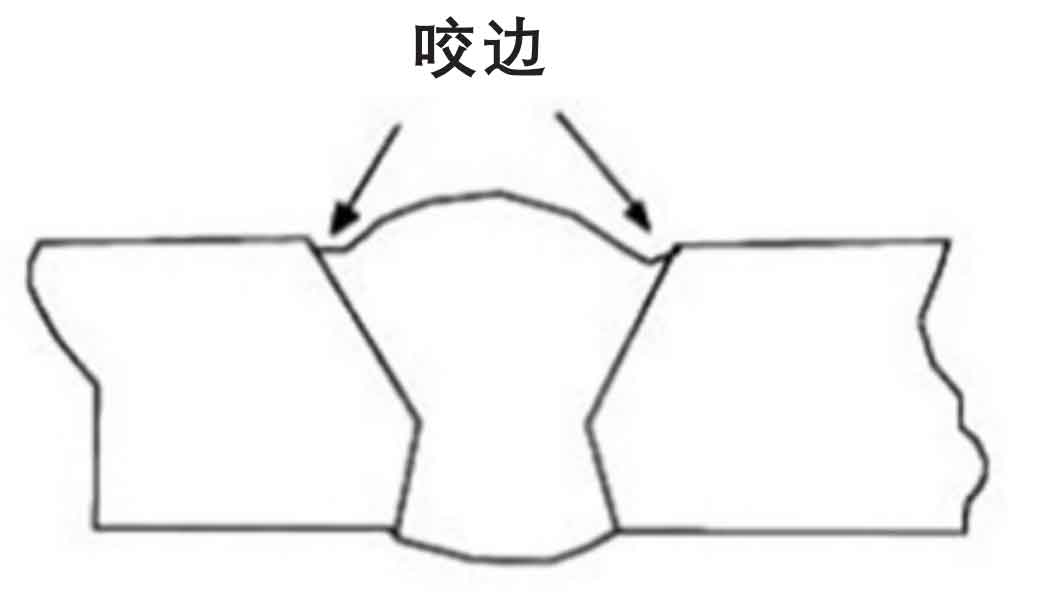Important Tips for Welders: Protecting Against Undercut Welding and Ensuring Stronger Weld Joints
In the world of welding, attaining solid and long lasting weld joints is the keystone of producing top quality job. Nonetheless, one common challenge that welders usually come across is undercut welding, which can jeopardize the honesty of the weld joint. By comprehending the elements that add to undercutting and implementing the right methods and precautions, welders can successfully stop this problem and make sure the long life and strength of their welds. Let's discover some important ideas that can aid welders navigate this challenge and elevate the top quality of their welding jobs.

Comprehending Undercut Welding
Undercut welding is an usual welding problem that happens when the weld metal fails to effectively fill the groove and leads to a groove-like clinical depression along the weld bead. This flaw damages the weld joint, making it vulnerable to breaking and failure under stress and anxiety. Damaging can be created by different aspects, consisting of extreme welding current, high welding speed, improper electrode angle, inaccurate electrode size, and bad welding technique.
Among the main factors for undercut welding is a discrepancy between the welding present and the welding speed. If the welding current is too expensive or the welding speed is too fast, the weld metal may not effectively fill the groove, leading to undercutting. In addition, using an electrode that is as well huge can lead to a comparable end result, as the excess steel can not appropriately flow right into the groove.
To avoid undercut welding, welders should ensure they are utilizing the appropriate welding parameters, maintain an appropriate electrode angle, pick the appropriate electrode dimension, and technique correct welding strategies. By resolving these aspects, welders can reduce the danger of undercutting and develop stronger, much more reputable weld joints.
Proper Welding Strategy
Efficient welding technique plays an important duty in making certain the high quality and integrity of weld joints. One fundamental facet of correct welding technique is maintaining the correct angle and range between the welding weapon and the workpiece.
In addition, a stable and regular hand motion is vital for producing solid and durable weld joints. Welders need to aim for smooth, consistent activities to guarantee even circulation of the weld material. Proper manipulation of the welding gun and filler product is likewise crucial to accomplishing optimum penetration and fusion.
Moreover, regulating the warmth input and picking the proper welding parameters based on the material being welded are critical variables in achieving high-quality welds - Preventing weld undercut. Welders should adhere to the recommended setups offered by welding treatment specifications and readjust them as required based on the particular demands of the project. By mastering correct welding strategies, welders can considerably enhance the stamina and integrity of their weld joints
Picking the Right Electrode
Keeping the right angle and range in between the welding weapon and the work surface is essential when taking into consideration the significance of picking the ideal electrode in welding applications. The option of electrode plays a crucial duty in figuring out the quality and stamina of the weld joint. Electrodes are available in different types, each created for details purposes and products.
Firstly, selecting the proper electrode size is necessary. Thinner electrodes are ideal for welding slim products, while thicker electrodes are much better for thicker materials and higher warmth applications. Matching the electrode size to the density of the work surface assists accomplish a well balanced weld.
Secondly, recognizing the product make-up of the electrode is vital. Different electrodes are created for welding particular materials like steel, stainless-steel, light weight aluminum, or cast iron. Utilizing the correct electrode product makes sure good fusion and reduces the threat of flaws in the weld.
Finally, thinking about the welding placement and technique is important when selecting the electrode type. Specific electrodes are better suited for overhead or vertical welding positions, while others function well for level or straight settings. Website Selecting the right electrode based Get More Info upon the welding strategy boosts the total weld top quality and integrity.
Preparing the Base Steel
To make certain a successful welding process, what initial steps should be taken when preparing the base steel for welding? Additionally, any type of existing weld product or residue from previous welding ought to be eliminated to ensure a clean surface area for the new weld.

Carrying Out Post-Weld Inspections

After conducting these analyses, welders should compare the results against industry requirements and task requirements to guarantee that the weld joint fulfills all needed requirements. Any deviations or insufficiencies found during the post-weld inspection needs to be immediately addressed with appropriate rehabilitative procedures to ensure the weld's honesty. By faithfully executing post-weld assessments and immediately dealing with any concerns, welders can maintain the high quality and dependability of their work, inevitably adding to the safety and durability of the bonded structures.
Verdict

In final thought, preventing undercut welding and making certain stronger i thought about this weld joints call for a combination of correct welding strategy, selecting the best electrode, preparing the base steel correctly, and performing post-weld examinations. By comprehending the reasons for undercut welding and implementing the necessary safety measures, welders can produce high-quality weld joints that satisfy market criteria and make certain the structural integrity of the welded parts.
Undercut welding is an usual welding issue that takes place when the weld steel fails to correctly fill the groove and results in a groove-like anxiety along the weld bead (Preventing weld undercut). Undercutting can be caused by various variables, including too much welding existing, high welding rate, inappropriate electrode angle, incorrect electrode size, and poor welding method
One of the main factors for undercut welding is a discrepancy in between the welding existing and the welding speed. If the welding current is also high or the welding rate is as well quick, the weld steel may not effectively fill the groove, leading to undercutting.Maintaining the proper angle and range between the welding weapon and the workpiece is fundamental when considering the relevance of choosing the best electrode in welding applications.